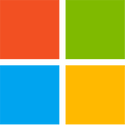Friday, March 21st 2025

Microsoft DirectX Raytracing 1.2 and Neural Rendering Brings up to 10x Speedup for AMD, Intel, and NVIDIA GPUs
Microsoft's DirectX Raytracing (DXR) 1.2 announcement at GDC 2025 introduces two technical innovations that address fundamental ray tracing performance bottlenecks. Opacity micromaps (OMM) reduce the computational overhead in alpha-tested geometry by storing pre-computed opacity data, eliminating redundant ray-geometry intersection tests. Shader execution reordering (SER) tackles the inherent GPU inefficiency caused by incoherent ray behavior by dynamically grouping shader invocations with similar execution paths, minimizing thread divergence that has historically plagued ray tracing workloads. The real-world implications extend beyond Microsoft's claimed 2.3x OMM and 2x SER performance improvements. Both techniques are shifting development from brute-force computational approaches toward more intelligent resource management. Notably, both features require specific hardware support.
Hardware vendors' implementation timelines remain undefined despite NVIDIA's announced support across RTX GPUs, raising questions about broader ecosystem adoption rates. Microsoft's Shader Model 6.9 introduces cooperative vectors. This hardware acceleration architecture drastically improves matrix computation performance, enabling a 10x speedup in neural texture compression while reducing memory footprint by up to 75% compared to traditional methods. It bridges the gap between conventional rendering and neural rendering, with Intel, AMD, and NVIDIA already demonstrating implementations that combine path tracing with neural denoising algorithms, potentially making computationally intensive graphics accessible on mid-range consumer hardware by late 2025. While the technical merit of these advancements is clear, the April 2025 preview release timeline for the Agility SDK means developers face at least several months before these features can be meaningfully implemented in production environments.
Sources:
Microsoft, via Wccftech
Hardware vendors' implementation timelines remain undefined despite NVIDIA's announced support across RTX GPUs, raising questions about broader ecosystem adoption rates. Microsoft's Shader Model 6.9 introduces cooperative vectors. This hardware acceleration architecture drastically improves matrix computation performance, enabling a 10x speedup in neural texture compression while reducing memory footprint by up to 75% compared to traditional methods. It bridges the gap between conventional rendering and neural rendering, with Intel, AMD, and NVIDIA already demonstrating implementations that combine path tracing with neural denoising algorithms, potentially making computationally intensive graphics accessible on mid-range consumer hardware by late 2025. While the technical merit of these advancements is clear, the April 2025 preview release timeline for the Agility SDK means developers face at least several months before these features can be meaningfully implemented in production environments.

66 Comments on Microsoft DirectX Raytracing 1.2 and Neural Rendering Brings up to 10x Speedup for AMD, Intel, and NVIDIA GPUs
Link to original post with article from tomshardware. www.techpowerup.com/forums/threads/microsoft-directx-raytracing-1-2-and-neural-rendering-brings-up-to-10x-speedup-for-amd-intel-and-nvidia-gpus.334455/page-2#post-5481187
If you read the post and seen the link to tomshardware you would see THEY SAID it so you saying there is no mention is incorrect.
On to the topic, I don't know a lot about the underlying plumbing here but I saw a comment elsewhere that said the speed-up is for particular operations, not an overall 10x improvement? So things WILL get faster but it won't be a night-and-day difference. Is that the case or was I misinformed?
apologiesPlease point out where I wrote this.
Oh, I didn’t. Derp.
* Not on the CPU side, where multithreading is available (though often not implemented in games due to problems with thread locks and syncing).
** From what I read concerning problems with the development of the the large multi-chip RDNA4 top perf GPU. It's just a hard problem to solve.
www.techpowerup.com/review/amd-radeon-rx-9070-series-technical-deep-dive/images/architecture-10.jpg
According to AMD's RDNA4 slides, the 9070 series does indeed support OOM and SER. Most reviews don't highlight the advances in RT architecture but it's definitely confirmed that RDNA4 complies with DXR1.2. Even RDNA3 also had some OOM tech according to the slide.
Here's another article that shows how to use SER on RDNA4.
markaicode.com/amd-rdna4-ray-tracing-shader-optimization/#performance-monitoring-and-profiling
Don't know which current games use SER but even if there are some that do, it's likely using a code path specifically for Nvidia RTX cards. Newer games that adhere to the DXR1.2 spec may well improve RT performance on RDNA4.
"RDNA 4 introduces new shader reordering similar to NVIDIA's Shader Execution Reordering (SER) for the GeForce RTX 40 Series"
You're wrong.
NVIDIA supports OOM and SER via NVAPI; thus, NVIDIA is already leveraging its advantage. e.g. Cyberpunk 2077.